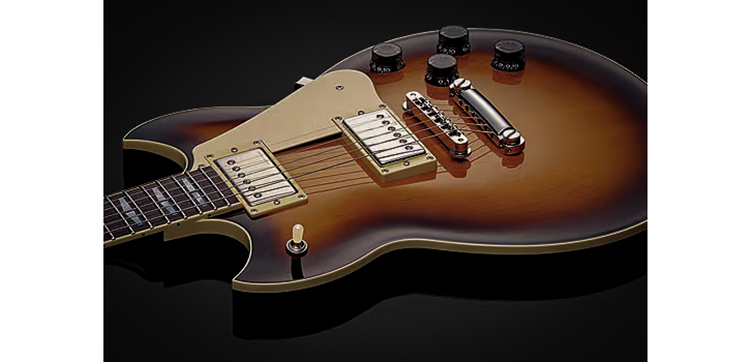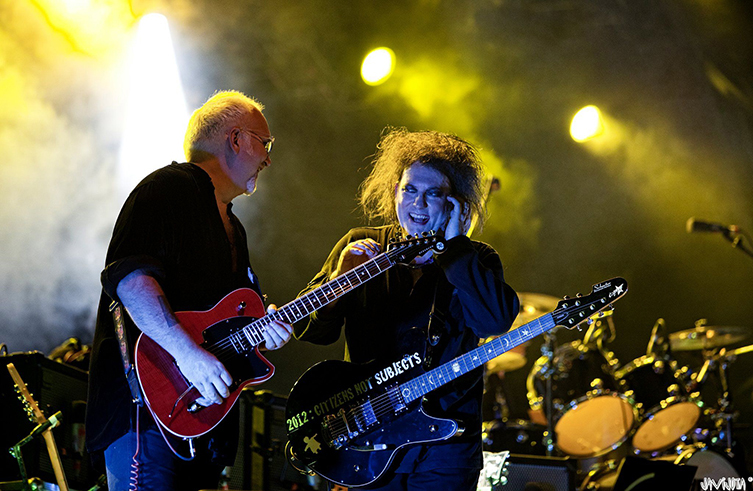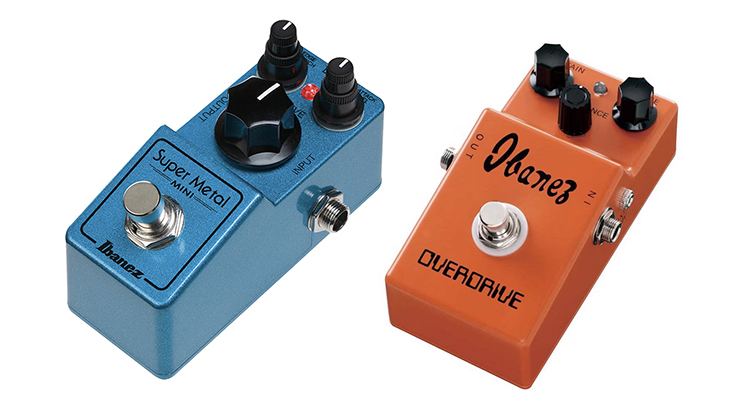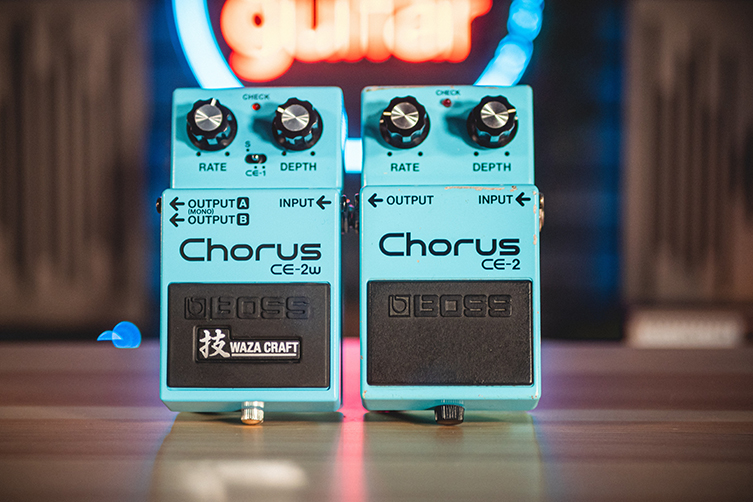Do you love the adventurous and unorthodox guitar sounds from the post-punk era? You won’t be the only one! The sounds from this era (late 70s, early 80s) are rightly applauded for breaking new ground in how guitars operated within a band context. The inventive use of arpeggios, dissonance, timing and - significantly - effects pedals, meant that a whole new vocabulary of guitar sounds emerged from the ashes of punk and New Wave. This era brought out some true pioneers who don’t get the respect they deserve.
Today, I’ll be looking at the sounds and styles of some of the most potent and revered post-punk guitar players, and delving into their effects use specifically. Now, this is important: this isn’t about how to recreate a particular tone from a certain song. To me, that’s the opposite of what post-punk was about! I want to lay out the tools you’ll need to capture that special vibe, to then go on to experiment with your own sounds and songs. Dive into the post-punk world but then swim through your own creations, if you’ll allow me to extend that metaphor!
My years of effects-use with guitars, and my certified geek status on the subject, hopefully means that you can trust my opinions and recommendations today. I’ve chatted personally to certain relevant artists too, so that may pop up in today’s blog too, in order to further validate my points.

Okay, sort your hair, don’t smile, and let’s get going!
Contents
The Post-Punk Players I’ve Picked
Post- Punk Modulation: Flanger Pedals
Post- Punk Modulation: Chorus Pedals
The Post-Punk Players I’ve Picked
How was that for alliteration? Right, here are the guitarists that I’ve chosen to represent the era post-punk music. It’s not an exhaustive best-of, but it is a group of interesting and unique musicians:
- John McGeoch (Siouxsie and the Banshees, Magazine, Pil)
- Robert Smith (The Cure)
- Rowland S Howard (the Birthday Party)
- Daniel Ash (Bauhaus)
- Bernard Sumner (Joy Division)
- Geordie Walker (Killing Joke)
Again, I’m not going through their rigs one at a time, but I have assessed what they used to get their sounds, and checked out how you can approach such sounds today.

(Photo: Javier Juarez)
Just the Pedals
Today’s blog is about effects pedals specifically. I’ve decided to focus on that area alone, so I won’t spend too much time talking about guitars or amps, since those are different subjects. In fact, I’ve omitted the great Tom Verlaine from my list of players above purely because it seems that he never used any pedals!
Speaking briefly though, most standard electric guitars will do for this style: it’s more about your approach/decision making - and what the sound goes through in terms of effects - than the guitar itself. You’ll find Telecasters (Daniel Ash), Yamaha SGs (John McGeoch), Fender offsets (Robert Smith, Rowland S. Howard) and hollowbody Gibsons (Geordie Walker) here, so there’s no single ‘post-punk guitar’!
The same goes for amps. Many post-punk players actually used solid state amps such as the Roland Jazz Chorus and the HH IC100-S, but just as many used tube amps like Fender Blackface combos and Marshall half-stacks. So, use what you prefer, and work with the pedals to find sounds that inspire you!
Post-Punk Overdrive Pedals
Overdrive and distortion are interchangeable terms here, and its an essential element to several (but not all!) post-punk players. Some guitarists such as Joy Division’s Bernard Sumner used a voltage attenuator to get more drive from his amps, which you can try if you want, but I’d just as soon step on an overdrive pedal to achieve a better result, right?
So, which ones? Here’s what I’ve found…
BOSS DS-1: Daniel Ash loves this one, as does Robert Smith. It’s slightly off subject, but I learned from Marillion’s Steve Rothery (perhaps too prog to be in today’s lineup? Still a great musician) that amazing things can be had from a DS-1 by simply turning the tone control all the way off…
Ibanez SM MINI: A modern take on the old Ibanez SM9 Super Metal pedal, beloved of John McGeoch. John also loved this classic…
Ibanez OD-850: a reissue of the old favourite. This is the other ‘orange distortion pedal’, and was widely used in the early 80s. Have you overlooked this one?

On top of these, I’d also nominate the following, based on use by several players from this era, and just by their sheer handiness:
Ibanez Tubescreamer (any variety)
Post- Punk Modulation: Flanger Pedals
In many ways, I’d say that modulation pedals are the most important part of the puzzle for post-punk sounds. Get this right and I think you’re 50% there regardless of what else you do. Flangers are probably the most significant, too. Daniel Ash used a Carlsbro Flanger which is long since discontinued, and whilst he now uses a BOSS BF-3, I’m going to be picky and say that the BOSS isn’t the same sound at all! That said, it’s the perfect choice for Robert Smith’s flanged Cure tones, and his are some of the best around.
Two particular flangers merit your attention. Firstly, the MXR M117 Flanger is the one used by John McGeoch extensively throughout his career. He actually mounted his up on a mic stand so that he could make changes on the fly. I’m going to say that this is a better choice for the Bauhaus fans too, compared with the BOSS one. The actual M117 Flanger isn’t always so easy to locate for some reason, but the MXR152 Micro Flanger is a simpler version, and the MXR EVH117 is everything you need and more.
The other one is the Electro-Harmonix Electric Mistress flanger. In any iteration (EHX change up their catalogue frequently), the Electric Mistress will give you that ethereal sweep so beloved of both Pil’s Keith Levine and The Police’s Andy Summers. Yes indeed, it’s NOT a chorus on things like Walking on the Moon & Every Breath You Take!
Post- Punk Modulation: Chorus Pedals
Whilst there is a bit of sonic crossover between chorus and flanger, they can also sound enormously distinct. If you can fit one of each on your pedal board, please do: you’ll cover much more of the post-punk musical landscape that way.
So, as mentioned, many of these players were fans of the Roland Jazz Chorus amps. This means that many chorus effects actually came from the amp, and not from a pedal at all! If you want that famous Jazz Chorus modulation (but don’t want the amp), then I know of one pedal will give it to you on a plate…
The BOSS CE-2W Waza Chorus is the answer. It literally has a switch called ‘CE-1’ (the BOSS CE-1 had the same chorus circuit as the amp) and is made by BOSS Japan to be a perfect rendition of this famous sound. There really isn’t much point in looking anywhere to be honest…

…unless you want Peter Hook’s incredible Joy Division bass sound! Hooky bought up every remaining original Electro-Harmonix Clone Theory in existence, as he told me himself a few years ago:
“I’ve got, like, 7 working and 6 in bits. It’s a bit scary actually, because the thing is, from a live point of view, you don’t notice the noise of an old analogue foot pedal. The trouble is, when you go into a studio now, the noise sticks out like a sore thumb. So, from a studio point of view, you tend to use something that’s a bit more modern. But live, it’s always the Clone Theory”.
Now, EH-X don’t make the original Clone Theory any more, but they have a number of similar units. Check out the Small Clone, the Neo Clone and the Nano Clone for your Hooky tones. There’s a Bass Clone too, and I’d recommend both guitarists and bassists to simply try them all and get the one that seems best.
Post-Punk Reverb & Delay
Post-punk players in the early 80s didn’t have the choices we have today. Certainly, reverb and delay effects were often rack-mounted units which we really don’t bother with anymore. We have such powerful processing available at our feet that it’s a pointless exercise to try to be ‘authentic’ by messing about with old rack units or genuine tape delays.
For reverb and delay, I believe every level-headed guitarist would agree with my point of view when I recommend you choose a modern digital pedal that has a ton of options.
The champagne choices come from Strymon (look at the Big Sky, Volante and Timeline pedals), UAFX (the Starlight is awesome) and a million boutique builders such as Earthquaker Devices, whose Dispatch Master and Avalanche Run pedals are ace.
That said, I still think some pretty authentic and ‘correct’ choices come from BOSS, given how many post-punk players used them: the DD-8 and RV-6 are more than enough for today’s needs. And do I have to even mention the ubiquitous (due to being great) Line 6 DL-4?
Other Pedals
You can specialise into other areas according to your own interests or requirements, but one pedal that most guitar players need sooner or later is a compressor. Back in the early 80s, the most popular model was the MXR Dynacomp. By today’s standards it isn’t the most sophisticated, but practically the entire guitar-playing population of Nashville still swears by it, and those folks know good tone!
Because it’s still very popular, and because it is the correct ‘period’ choice, I’m recommending you add the Dynacomp to your post-punk pedal board.
Other than that, pitch effects can be helpful for mimicking certain synth or studio textures from back then. It’s a less populated part of the pedal world, mainly because such effects are difficult to develop. Try a Digitech Whammy pedal in your set up, because even if you don’t want the Tom Morello screeches, you can have the amazing octaver and chorus/detune effects that are built into every Whammy.
Creative Playing
You need the right pedals for the right sound, but for credible post-punk playing, it really is all about the notes and the timing. There was just so much genuinely inventive, unorthodox playing happening at this time, lots of which has still not been co-opted into the mainstream.
I would recommend deep dives into players such as John McGeoch and Tom Verlaine specifically, to hear musicians who utilised their instruments in massively original ways, and always within the service of the song.
But yeah, you do need the right sounds! So for the sake of completion, here’s what my own post-punk pedal board would look like, from guitar (a Fender Jag or Yamaha SG, naturally) to amp…
- MXR Dynacomp Compressor
- Ibanez TS9 Overdrive
- ProCo Rat Distortion
- MXR EVH117 Flanger
- BOSS CE-2W Waza Chorus
- BOSS RV-6 Reverb
- MXR Carbon Copy Delay
What would you choose? And which post-punk players would you look to for inspiration? This area of guitar playing is extremely creative, and pretty underappreciated, so I hope you dive in and have fun!
Click for View All of Our Pedals

